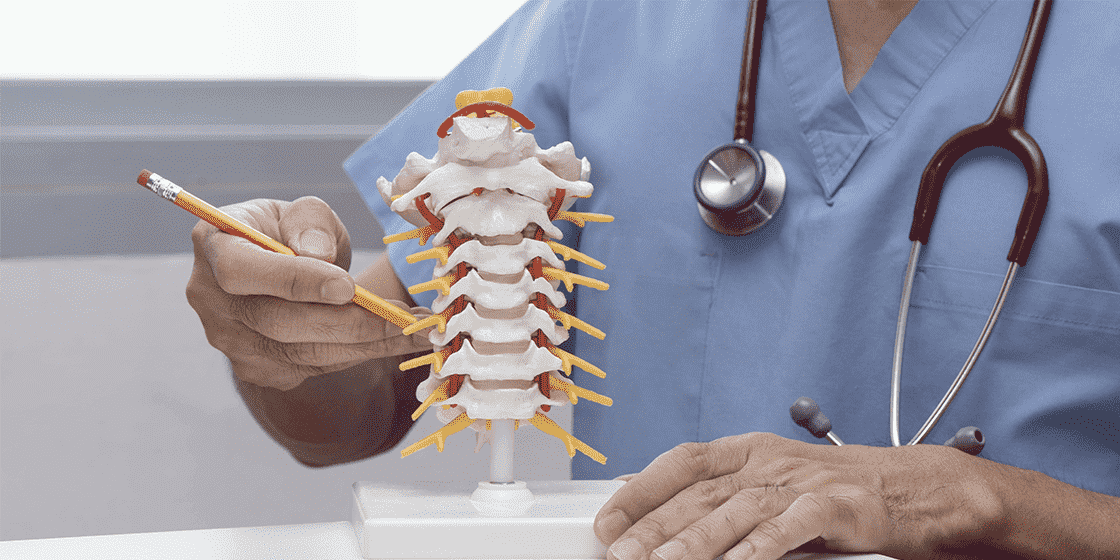Cervical myelopathy is a spinal condition that occurs when the spinal cord in the neck becomes compressed or squeezed due to degenerative changes in the cervical spine. This condition can lead to various symptoms, such as neck pain, weakness, numbness, and problems with balance and coordination. If left untreated, cervical myelopathy can progress and result in more severe neurological deficits. In this blog, we will explore effective treatment options for cervical myelopathy to help manage the condition and improve the quality of life for those affected.
Don’t let cervical myelopathy impact your quality of life – take action now and reach out to Specialty Care Clinics at (469) 545-9983. Let us help you on your journey to better spine health and symptom relief.

Non-Surgical Treatments:
In the early stages of cervical myelopathy or for mild cases, non-surgical treatments may be recommended. These options aim to relieve pressure on the spinal cord and alleviate symptoms:
Medications: Non-steroidal anti-inflammatory drugs (NSAIDs) and pain relievers may help reduce inflammation and manage pain associated with cervical myelopathy.
Physical Therapy: Specific exercises and physical therapy can help strengthen the neck and back muscles, improve flexibility, and enhance overall posture and alignment.
Cervical Traction: Cervical traction is a technique that involves gently stretching the neck to relieve pressure on the spinal cord and nerves.
Corticosteroid Injections: In some cases, corticosteroid injections may be administered around the affected area to reduce inflammation and provide temporary relief from symptoms.
Surgical Intervention:
If non-surgical treatments do not provide sufficient relief or if cervical myelopathy is severe and progressive, surgical intervention may be necessary. The type of surgery recommended depends on the specific cause and severity of the compression. Common surgical options include:
Anterior Cervical Discectomy and Fusion (ACDF): This procedure involves removing the damaged disc or bone spurs that are compressing the spinal cord and fusing the adjacent vertebrae together for stability.
Cervical Laminectomy: A laminectomy is performed to create more space for the spinal cord by removing a portion of the vertebral arch (lamina).
Artificial Disc Replacement: Instead of fusing the vertebrae, artificial disc replacement surgery involves replacing the damaged disc with an artificial one, preserving more natural neck motion.
Posterior Cervical Laminoplasty: This surgery involves creating more space for the spinal cord by opening the lamina on one side and securing it with plates to maintain stability.
Rehabilitation and Recovery:
After surgery or non-surgical treatments, rehabilitation plays a crucial role in recovery. Physical therapy and occupational therapy help patients regain strength, flexibility, and coordination. Rehabilitation may also include gait training and balance exercises to improve mobility and prevent future injuries.

Lifestyle Modifications:
Patients with cervical myelopathy can benefit from certain lifestyle modifications to minimize symptoms and improve overall well-being. Maintaining a healthy weight, avoiding smoking, and adopting good posture practices can all contribute to better spine health and symptom management.
Conclusion:
Cervical myelopathy is a serious condition that requires prompt diagnosis and appropriate treatment to prevent further neurological damage and improve the quality of life for affected individuals. Non-surgical treatments can be effective for mild cases, while surgical intervention may be necessary for more severe and progressive conditions. Rehabilitation and lifestyle modifications also play a vital role in the overall management and recovery process. If you or a loved one is experiencing symptoms of cervical myelopathy, consult a spine specialist for a comprehensive evaluation and personalized treatment plan to address the specific needs and concerns effectively.
